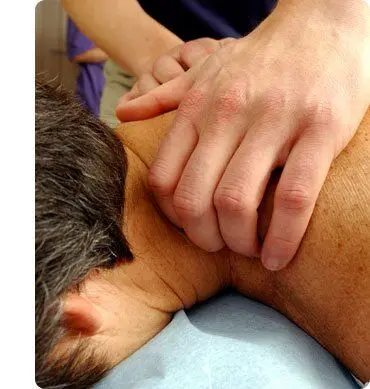
Manual Therapy Through Kim Robinson’s Eyes
Mr Kim Robinson, a leading figure in manual therapy education and Director of Manual Concepts, recently stopped over at Singapore to conduct a workshop. Musculoskeletal Consumer Review took an opportunity to sit with Mr Kim Robinson to discuss about his views on Manual Therapy.

MCR: How would you define manual therapy?
Mr Robinson: I believe manual therapy is a blend of a science and an art form, using skills and dexterity of hands-on technique to benefit individuals with a variety of disorders, and in particular, neuromusculoskeletal disorders.
MCR: What are some of the effects that manual therapy has on people with back pain?
Mr Robinson: The primary effect of manual therapy is the relief of pain. The is obviously driven by the needs of our patients, who often present to our clinics for pain relief. Hand in hand with this effect is the return of function. Particularly with respect to chronic back pain, the restoration of function is of particular importance. With pain relief and restoration of function, comes rehabilitation of a patient to return to meaningful work and activities of daily life, including sports, and other leisure activities. However, manual therapy plays an extremely important role in the treatment of acute disorders. If the acute disorder is effectively treated with manual therapy and other interventions, it is possible to prevent a condition becoming chronic. This creates a massive saving of cost and suffering in the community.
MCR: With advancement in technology do you see a possibility of manual therapy being replaced by robots in the future and why?
Mr Robinson: I believe this to be unthinkable! Manual therapy is as much an artform as it is a science. For manual therapy to be applied effectively, it requires deft touch and sensitive handling. The therapist can gain immense feedback from a patients tissues, something that a robot would be totally unable to sense. Manual therapy is not just the application of techniques but a process of clinical reasoning which enables the therapist to work through a problem solving process utilizing sensitive manual assessment and examination skills in order to make a clinical diagnosis which, in turn, enables the therapist to apply the most appropriate treatment technique for that stage of a particular patient’s disorder.
MCR: Is there any difference in terms of treatment techniques between a manual therapist, physiotherapist and a chiropractor?
Mr Robinson: Manual therapy has evolved very much over the last few decades. There have been a variety of disciplines in manual therapy that have contributed to this evolution. Many of the techniques at the disposal of the current day manual therapist, physiotherapist and chiropractor are a result of this evolution. So there is a developing “blurring” of the boundaries and differences between these disciplines. Having said that, I believe effective technique is in the hands of the clinician or the therapist. It takes many years of clinical practice, treating many, many patients, to become an effective and skilled therapist. I believe physiotherapists undertake an exhaustive and rigorous undergraduate training and then many of them put themselves through postgraduate training to further develop their skills and knowledge. This places physiotherapists in an excellent position to utilize the manual techniques available to them.
MCR: Do you see yourself as a physiotherapist or a manual therapist and why?
Mr Robinson: I have recently (and successfully) sat examinations to become a Fellow of the Australian College of Physiotherapists. This rigorous examination process has enabled me to achieve the qualification of Specialist Musculoskeletal Physiotherapist. So I see myself, first and foremost, as a physiotherapist. My postgraduate training qualified me, then, as a manipulative therapist, then as a musculoskeletal physiotherapist and more recently a specialist musculoskeletal physiotherapist.
 |
Qualifications
Professional Highlights
Quick Facts Kim Robinson has developed a reputation as a leading figure in manual therapy education. He was formerly a lecturer and clinical teacher on the Postgraduate Diploma in Manipulative Therapy programme at Curtin University of Technology for many years before establishing Manual Concepts. He now conducts a variety of lectures and clinical programmes around the world. Kim is an active member of the Australian Physiotherapy Association and the Musculoskeletal Physiotherapists Association of Australia. Kim is an accredited teacher of the Mulligan Concept and also the Australasian Regional Manager of the Mulligan Concept Teachers Association. His research interests and publications include manual diagnosis, cervicogenic headache, neck pain and the application of the Mulligan Concept. |
Related Articles
- Patient Education Is Crucial Musculoskeletal Consumer Review’s editor, Cindy Tan, took an opportunity to sit with Sylvia Ho, a Principal Physiotherapist at Core Concepts…
- Impact Of Medical Information On The Internet Musculoskeletal Consumer Review (MCR) took an opportunity to sit with Dr. Leslie Tay, a Resident Family Doctor from Karri…
- Common Neck Pains Seen In Clinics Musculoskeletal Consumer Review took an opportunity to sit with Dr. Razmi Rahmat, a Consultant Spine and Orthopaedic Surgeon from…
- A Case Study: Spasmodic Torticollis & Physiotherapy Spasmodic Torticollis (ST) also known as cervical dystonia is a syndrome where the muscles in the neck contract involuntarily. This…
- The Ultimate Guide to Cycling in Singapore Are you a amateur cyclist looking to take the next step in the world of competitive cycling in Singapore?…
